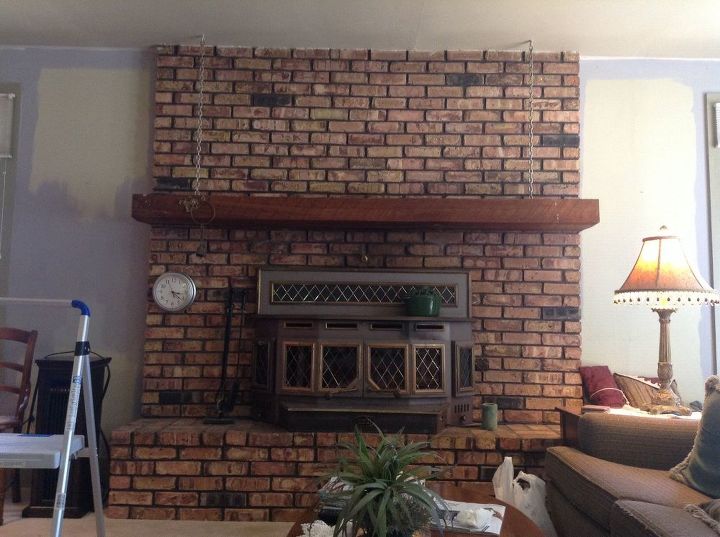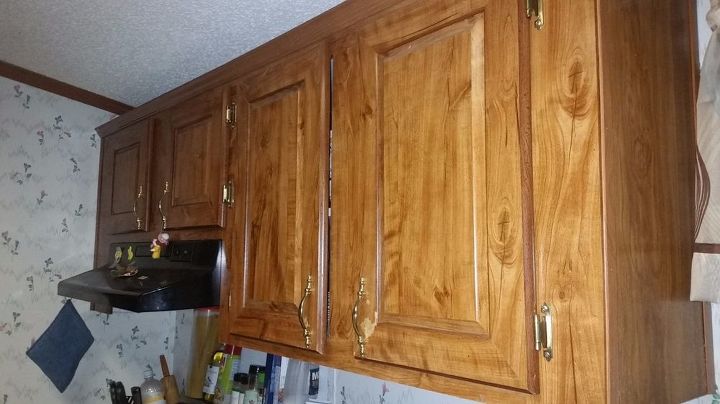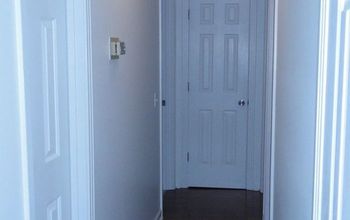Can you paint tub surround ?
Related Discussions
Should I paint or stain my oak kitchen cabinets?
I was wondering if you could help me with something -- I have an entirely oak kitchen. I know it's the rage now to paint or gel stain cabinets. I've been considering ... See more
How to paint a metal front door?
How do I paint my front door? It's metal.
How to paint grout?
How do I paint grout to change the color? The grout is in great shape, but the color - meh.
How to whitewash a brick fireplace?
What is the best method to whitewash bricks surrounding a fireplace?
Can you paint shrink wrapped kitchen cabinets?
It is not in the budget at this time to get new kitchen cabinets. My question is. "Can someone please tell me if you can paint over the shrink-wrapped kitchen cabinet... See more




They make an epoxy paint for tile
RustOleum makes a great tub/tile product, but the prep work is critical to a good result
Rustoleum or Homax tub and tile paint kits. They are epoxy based.
Hi Mary,
Here's a tutorial about how to use epoxy paint for your tub surround. Wishing you the best! -Linda
https://www.hunker.com/13417021/how-to-paint-a-tub-surround
Some do. I wouldn't count on it staying nice forever, but being an improvement to get by until I could do what I really wanted. The surround needs to be immaculate before you coat it. Soap scum is oily & repels anything you coat it with so paints doesn't adhere well. Water spots could show through your coating as they are raised. Clean, let it dry overnight.
Buy a product formulated to be used on your surface & follow the manufacturers instructions exactly. For a few things, more is better. If they recommend cleaning or prepping w/ a specific product, do it, even if you know you already have the surround clean. I would double the dry/cure time. If they say overnight, you leave it for 48 hrs. If they say well-ventilated, an open window is not good enough. Turn on the exhaust fan-before you open that can if it's flammable -& run a fan in that window blowing out. Hang it from a hook in the ceiling if you have to. Or wire it to a ladder outside at the level of the window. Leave it all running until it is completely dry & the fumes are much less. They won't be completely gone for days, esp w/ an epoxy or paints that need more than soap & water for cleanup. Many specialty coatings are more difficult to apply & tend to run. A small roller for smooth surfaces is best. You may need to buy covers made of the fuzzy stuff if it eats the foam ones. Read the container. Ask the clerk. Any doubt, buy both. Most of those coatings have a limited working time so have everything you even think you might need before you start. 2 thin coats will get you a better job than one thick one. Do not try to cover in one coat, esp if you have to fight it to do it. You will almost always walk back in after lunch & find runs everywhere! And you can't fix them. You want a brush that works well for you, but not expensive ones as the epoxy type paints & paints made for damp places are almost always impossible to clean out well enough to use those brushes again. Buy disposable gloves, too. Foam brushes may work, but not easy to trim with. Or even to apply paints on some surfaces. Wipes it off about as much as puts it on! I always use chip brushes, but w/ caution. Choose one that has more bristles, but still tapered & rub/pick through it to remove loose bristles before you start. Then, still watch closely for more loose ones showing as you apply paint. They are junk made to be thrown away after one use, but what I like is the accuracy of trimming in really tight spaces & that what they apply self-levels better w/ the small amount of paint they hold. No brush marks. They are natural bristle which many of the finest brushes you can buy are made of. Wonderful for varnishes of all tyoes! For crafts, applying glues, even tar in small amounts (trimming trees) I don't use them for bigger jobs like an entire room. Buy chip & foam & use what works best for you. Foam falls apart fast so buy several. Chip, two for each coat you will apply ought to be more than enough If you don't get interrupted. Which reminds me. Do not stop in the middle of a wall. Finish it before you take a break or it will show where you left off. When trimming corners, barely overlap onto the next wall. 1/i" is enough & don't leave it thick there. It does not have to vover. You will hit it agsin. Then be careful about the wall previously painted. You want your job as smooth as the surface you are covering. l If you buy a regular brush, a 1" to 2" tapered sash brush is what you want. A beginning painter usually does better trimming w/ a smaller brush & even if experienced, they help w/ the gooey stuff that tends to look good & slowly sag into runs when it's too late to fix them. Carefully mask or remove anything you don't intend to paint. Esp w/ epoxies. It can be next to impossible to wipe clean. My favorite tool for removing an oops is a 1" flexible putty knife. The blade should be thin, not thick. If you can find one. You can use it naked (the knife, not you:) or wrap a thin rag such as a scrap of t-shirt fabric around it & adjust it to a clean spot after every wipe. Enjoy your new look:)